Sculptra Dallas
At Plush Aesthetic, we take pride in offering the revolutionary Sculptra injections, a unique approach to facial rejuvenation. With the influx of cosmetic treatments available today, what makes Sculptra stand out? Unlike many other dermal fillers that simply fill in facial wrinkles, Sculptra works uniquely.
As a collagen stimulator, Sculptra treatments dive deep into the skin, targeting the underlying causes of the aging process.
Sculptra is not just any dermal filler, it's a unique dermal filler that uses Poly L Lactic Acid (PLLA) to stimulate collagen production in your skin, addressing deep facial wrinkles and restoring lost volume for a more youthful appearance.
The beauty of Sculptra treatments lies in its dual-action. First, it provides immediate volume, addressing cosmetic concerns like smile lines and fine lines. Secondly, over time, Sculptra stimulates natural collagen production in the treated area. As the PLLA gets absorbed, it leaves behind a framework that encourages natural collagen growth, ensuring lasting facial rejuvenation.
The Sculptra treatment is FDA approved, ensuring it's safe for those with healthy immune systems. The treatment session usually lasts less than an hour, and many patients return to their normal activities immediately. Another advantage of Sculptra over other dermal fillers is its longevity. Sculptra treatments can maintain their effects for up to two years, providing long-lasting facial volume and diminished facial wrinkles.
With a vast array of benefits, it's clear why Sculptra injections have taken the world of cosmetic dermatology by storm. Whether you're looking for a solution to deep facial wrinkles or wanting to restore volume for a more youthful appearance, Sculptra is the ideal choice. Join us as we delve deeper into understanding the skin, the aging process, and the science behind Sculptra at Plush Aesthetic.
Understanding the Skin

The facial anatomy is a masterful construction, a harmonized interplay of several layers, each contributing to both functionality and aesthetics. From the deep foundational bones to the surface layer that meets the world, understanding this intricate structure provides valuable insight into facial health and rejuvenation.
Facial Bone Structure
The skeletal foundation of the face consists of numerous bones, including the mandible (lower jaw), maxilla (upper jaw), zygomatic (cheekbones), and frontal bone (forehead). These bones provide a stable framework, determining the basic shape of the face. As we age, bone resorption can subtly alter this framework, leading to changes in facial contours.
Fat
Beyond the muscular layer lies the fatty tissue. This layer is not uniformly distributed and is compartmentalized into distinct fat pads. These fat pads give volume, softness, and contour to the face, creating the roundness of cheeks and the fullness of lips. Age or other factors may lead to a reduction or shift in these fat pads, leading to volume loss or sagging.
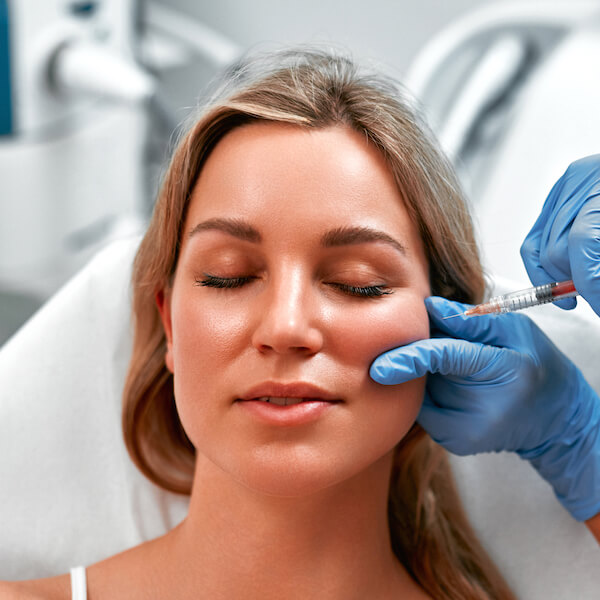
The Dermis Layer
Situated directly above the subcutaneous fatty tissue, the dermis stands out as an integral layer in the skin's multilayered structure. Its complex matrix of specialized proteins, cells, and microstructures ensures the skin remains healthy, resilient, and responsive to external stimuli.
Collagen and Elastin: Pillars of Strength and Flexibility
A remarkable feature of the dermis is its rich content of collagen and elastin fibers. Collagen, the most abundant protein in the human body, bestows the skin with its tensile strength. This structural protein is responsible for the skin's resistance to tearing and stretching, effectively acting as its foundational scaffold.
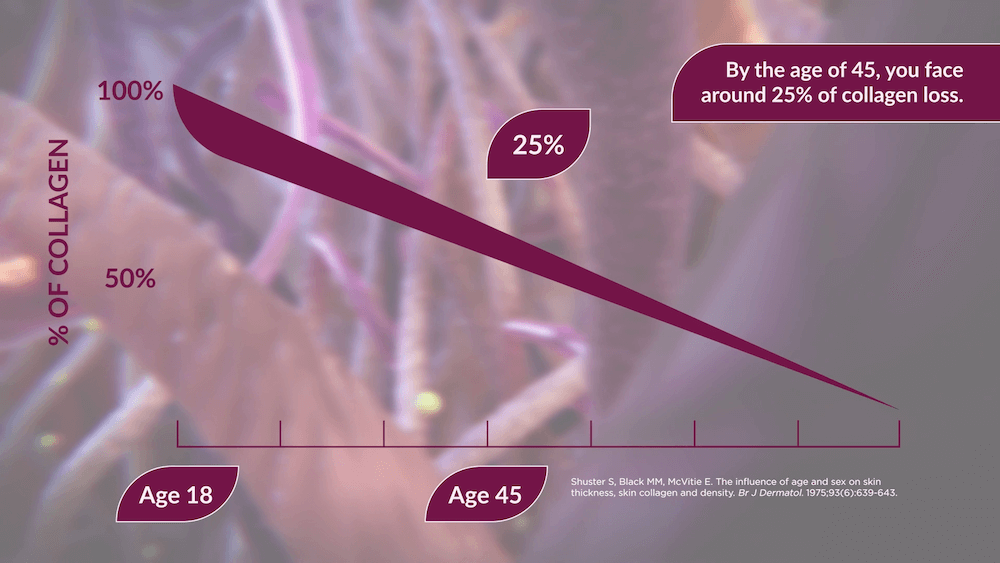
Elastin, while present in lesser amounts compared to collagen, is no less crucial. It grants the skin its elasticity, enabling it to regain its shape post deformation, such as stretching or contracting. Together, collagen and elastin maintain the skin's firmness and suppleness, hallmarks of youthful skin.
The Role of Blood Vessels and Nerves
Interlaced throughout the dermis are numerous blood vessels and nerve endings. These blood vessels not only deliver essential nutrients to the skin cells but also play a critical role in body temperature regulation. They adjust blood flow in response to both external and internal environmental changes, ensuring the skin remains adequately nourished and oxygenated.
Simultaneously, the nerves within the dermis render the skin highly sensitive. They constantly relay information about the external environment, such as temperature and tactile stimuli, to the brain, making the skin a dynamic sensory organ.
Hair Follicles and Sweat Glands: Functional Microstructures
Embedded within the dermis are hair follicles and sweat glands. Hair follicles, apart from aiding in hair growth, contribute to temperature regulation and tactile sensation. They are often associated with sebaceous glands, which secrete sebum. This natural oil is vital for maintaining skin moisture and acts as a barrier against environmental aggressors.
Sweat glands, on the other hand, are crucial for thermoregulation. By producing sweat, they not only help cool the body but also assist in the elimination of waste products, ensuring homeostasis.
The Determinants of Dermal Health
The overall health, density, and functionality of the dermis significantly influence skin texture, tone, and appearance. Various factors, from environmental aggressors like ultraviolet radiation and pollutants to lifestyle habits and genetic predispositions, can impact the integrity of this vital skin layer. Hence, a deeper understanding of the dermis and its myriad components offers a more comprehensive view of skin health and the interventions required to maintain it.
ENQUIRE ONLINE
Using this form to enquire online, this is the fastest way to ensure your enquiry reaches the best person in our team as quickly as possible.
The Epidermis Layer
Positioned as the face's frontline defense, the epidermis is the skin's outermost layer. Its primary responsibility is safeguarding the underlying tissues from a plethora of external challenges. Unlike the deeper skin layers, the epidermis does not contain blood vessels. Instead, it primarily consists of cells called keratinocytes, which are densely packed and undergo a unique life cycle.
Keratinocytes: The Dominant Cell Type
Keratinocytes make up about 90% of all epidermal cells. These cells originate from the basal layer (the innermost layer of the epidermis) and journey outward as they mature, undergoing a process known as keratinization. During this transformative journey, they produce and fill up with keratin, a strong, fibrous protein. As they reach the skin's surface, they become the corneocytes – flattened, dead cells that eventually shed in a continual process termed desquamation.
Barrier Function: More Than Just Protection
While offering a physical shield is a primary function, the epidermis does much more. It acts as a selective barrier, deciding what enters and what exits the skin. This barrier function ensures harmful pathogens, chemicals, and allergens are kept at bay, while essential water and electrolytes are retained. The lipids found between corneocytes play a pivotal role in this, ensuring the skin's hydration levels are maintained and preventing excessive water loss.
Protection Against Ultraviolet Radiation
Melanocytes, another cell type in the epidermis, contribute to the skin's defense against the potentially harmful effects of ultraviolet (UV) radiation. Upon exposure to UV rays, melanocytes produce the pigment melanin, which absorbs these rays and dissipates them as harmless heat. This process not only protects the skin from UV-induced damage but also contributes to skin pigmentation and tanning.
Indicator of Overall Health
A healthy epidermis isn't just about protection; it's also a reflection of one's overall well-being. When this layer is smooth, clear, and radiant, it suggests that the skin cells are functioning optimally, receiving necessary nutrients, and efficiently expelling waste products. On the other hand, changes in its texture, color, or hydration levels can signal underlying health or dermatological issues.
Hyaluronic Acid & Poly L Lactic Acid (PLLA)
Collagen, a fibrous protein that gives structure to our skin, plays a crucial role in maintaining skin's elasticity and strength. As individuals age, there's a notable decline in collagen production. This decline is attributed to both intrinsic and extrinsic factors, leading to the appearance of facial wrinkles, fine lines, and reduced facial volume.
The efficiency of treatments like Sculptra, an FDA-approved dermal filler, lies in their ability to stimulate collagen production. By revitalizing collagen synthesis, Sculptra treatments offer a more youthful appearance, diminishing facial wrinkles and restoring lost volume.
Intrinsic Aging
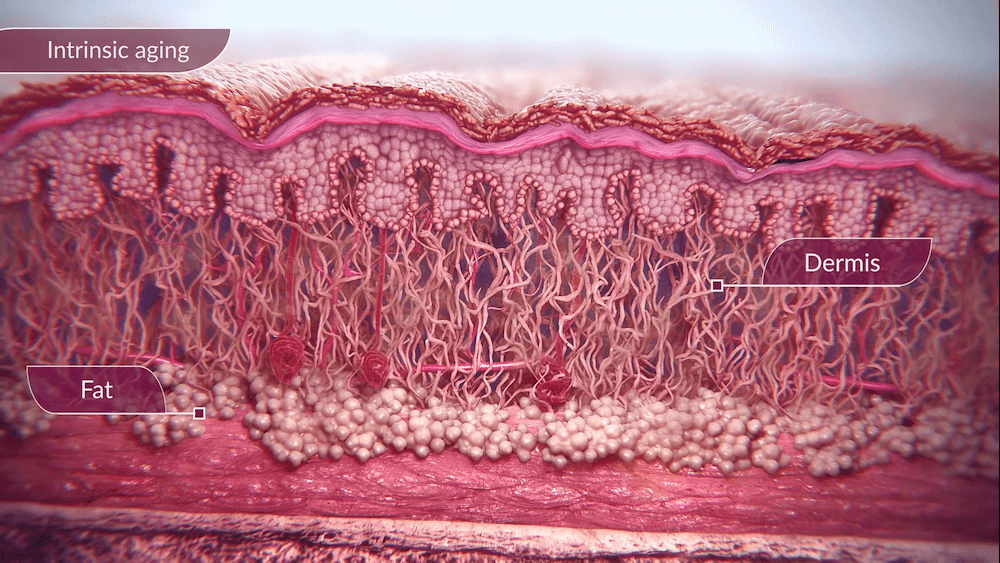
Intrinsic aging represents the skin's natural aging trajectory, driven by internal factors, primarily genetics. As time marches on, skin undergoes gradual changes: it thins, loses fat, and no longer appears as taut or smooth as it once did. While Sculptra treatments and other dermal fillers have made significant strides in reversing some of these effects, intrinsic aging is an inevitable process we all encounter.
Declining collagen production is an integral part of intrinsic aging. The American Journal of Pathology published one study that found that chronologically aged skin had decreased collagen production.
Extrinsic Aging
Extrinsic aging pertains to the aging caused by external factors, particularly environmental and lifestyle choices. Cumulative exposure to ultraviolet (UV) rays from the sun is a primary culprit, known to degrade collagen at a rate far faster than chronological aging. Apart from UV exposure, other factors like smoking, pollution, and poor nutrition contribute significantly to extrinsic aging.
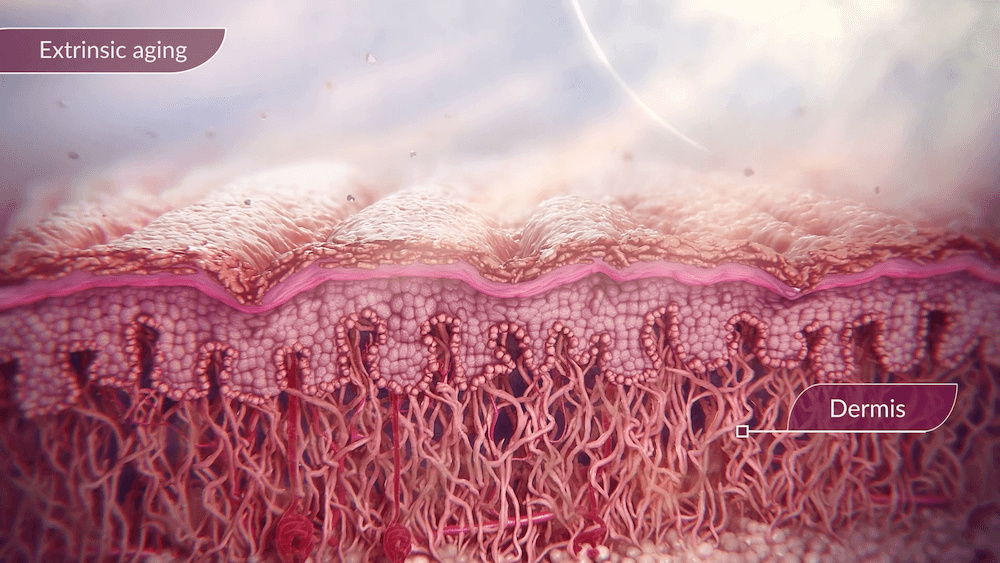
For those concerned about facial wrinkles and fine lines exacerbated by extrinsic factors, Sculptra injections serve as an effective remedy. As a unique dermal filler, Sculptra not only addresses facial volume loss but also combats deep facial wrinkles and fine lines, offering facial rejuvenation.
Interestingly, a study published in the International Journal of Cosmetic Science found clear indications of the exogenous factors influencing the extrinsic aging process, highlighting smoking and exposure to UV light as being among the primary culprits. FDA-approved Sculptra aesthetic treatments, coupled with laser treatments and laser therapies, have shown promising results in managing skin discoloration and other extrinsic aging markers.
Modern Anti-Aging Approaches
The cosmetic dermatology landscape has witnessed monumental advancements in the past few decades. Sculptra, made from poly L lactic acid (PLLA), is distinct from other dermal fillers. Its primary mechanism isn't just about filling lost volume. Instead, Sculptra treatments activate the skin's healing response, stimulating collagen production. This approach means that results from Sculptra injected areas can last up to two years, as highlighted in the Journal of Aesthetic Plastic Surgery.
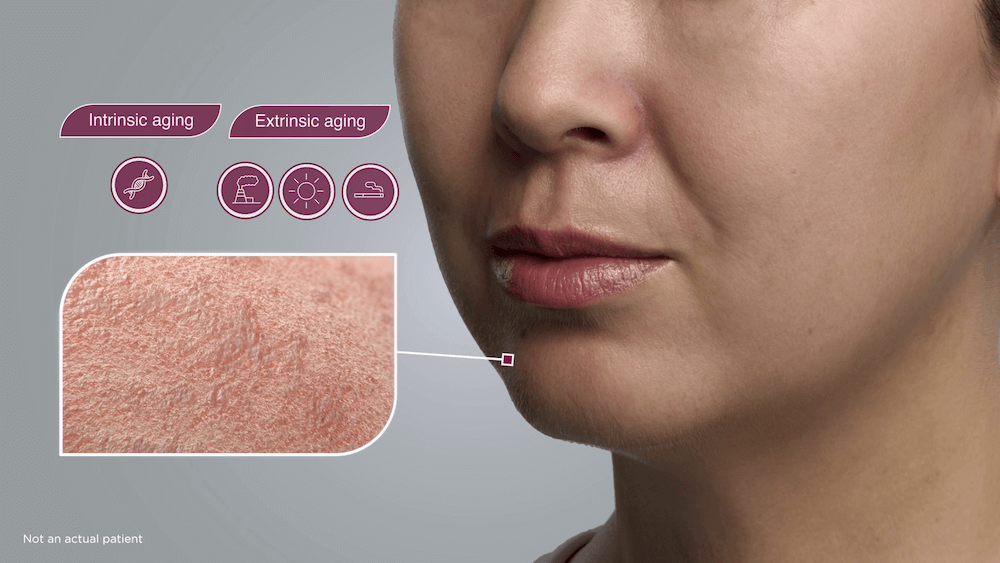
While Sculptra offers longer-lasting results, it's paramount that candidates for Sculptra possess healthy immune systems. Board-certified specialists recommend an initial consultation to determine the suitability of Sculptra injections, considering factors such as allergy testing and previous responses to cosmetic injections.
Treatment sessions with Sculptra, which often take less than an hour, allow patients to resume normal activities immediately. However, as with any injectable treatment, some patients may experience mild swelling or skin inflammation at the injection site. These reactions are typically short-lived and can be managed efficiently.
Holistic Aging Management
Comprehending the aging process demands an understanding of both intrinsic and extrinsic factors. Armed with this knowledge, individuals can make informed decisions about aesthetic treatments, whether they're considering Sculptra injections or exploring other fillers.
With the advancements in cosmetic medicine, achieving a youthful appearance, even in the face of declining collagen production, is now more attainable than ever before. The key lies in selecting treatments that align with individual needs and seeking guidance from board-certified experts who can navigate the complex terrain of anti-aging interventions.
Sculptra Injections
How Sculptra Injections Work?
The aging process takes a toll on our skin. As collagen production decreases, due to factors such as aging and sun exposure, wrinkles and lines become evident. Among the FDA approved dermal fillers, Sculptra has emerged as a unique injectable treatment that not only addresses these concerns but also stimulates collagen production.
So, how does Sculptra achieve this? Sculptra injections, predominantly composed of Poly L Lactic Acid (PLLA), work at the deep layers of the skin. Unlike other dermal fillers, such as hyaluronic acid-based fillers, Sculptra's main mechanism of action isn't just about adding volume. When Sculptra is injected, it fills wrinkles with small PLLA beads. Over time, these beads biodegrade, and the body's natural reaction is to replace the biodegraded PLLA with fresh collagen.
Sculptra treatment is especially known for its efficacy in correcting nasolabial fold contour deficiencies and rejuvenating the cheek region, which often shows signs of aging in the form of fine lines or volume loss. For a detailed and optimal aesthetic treatment, Sculptra is usually injected using a fine needle in multiple locations. This ensures that the facial volume is evenly restored and wrinkles are adequately addressed.
Who is a Good Candidate for Sculptra Treatment?
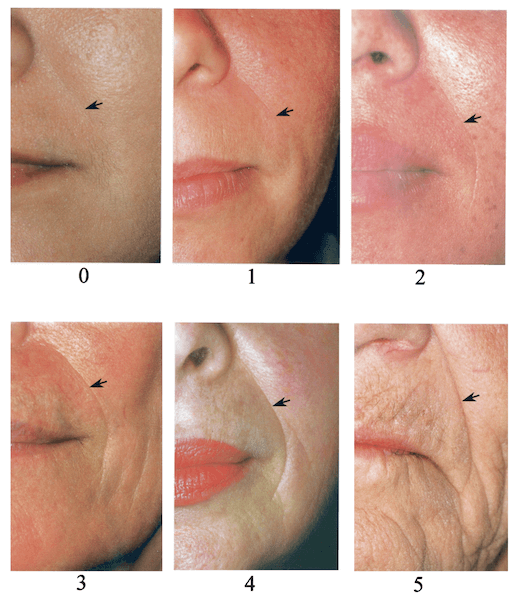
Individuals with a healthy immune system are generally suitable candidates for Sculptra treatment. Specifically, those looking to rectify:
- Shallow to deep nasolabial fold contour deficiencies.
- Fine lines and wrinkles in the cheek region.
The Sculptra treatment regimen typically consists of up to four injection sessions, scheduled 3-4 weeks apart.
Sculptra injections may provide cosmetic correction for individuals with a Wrinkle Assessment Scale (WAS) of 2, 3, or 4.
The results?
Most patients witness a 0.5 to 1-point improvement in WAS as early as 9 weeks post the initial Sculptra treatment.
Allergic Reactions
Sculptra might not be suitable for those with:
- Severe allergies, especially with a history of anaphylaxis.
- Allergy to any Sculptra ingredients, including PLLA, carboxymethylcellulose (USP), or non-pyrogenic mannitol (USP).
- History or risk factors for hypertrophic scarring or keloid formation.
Recovery Time
Sculptra, as an advanced dermal filler treatment, has a relatively straightforward recovery process. Post-treatment, patients might experience mild swelling, redness, or tenderness at the injection site. However, these symptoms are typically short-lived and resolve within a few days.
It's recommended that patients avoid strenuous activities, excessive sun exposure, UV lamps, indoor tanning, and extreme temperatures for at least 24 hours after the Sculptra treatment to ensure optimal recovery. While Sculptra sessions are minimally invasive, it's essential to follow the post-treatment care guidelines provided by the healthcare professional.
One of Sculptra's primary advantages is the gradual and natural-looking improvement in facial volume and wrinkle reduction, meaning there's no sudden change that necessitates downtime. While the aesthetic treatment results become increasingly evident over several weeks, patients can resume their daily activities almost immediately.
As Sculptra stimulates collagen production, the skin's rejuvenation continues over time. Typically, a regimen of up to four injection sessions, spaced 3-4 weeks apart, is recommended for optimal results. Between sessions, the treatment area continues to heal and improve, with no extended recovery period necessary. In essence, Sculptra offers the dual benefit of minimal recovery time and lasting, natural-looking results.
Clinical Studies of Sculptra Treatments
Sculptra, comprised mainly of poly-L-lactic acid (PLLA), has been the subject of extensive research, with studies keen to unpack its influence on skin, particularly in terms of collagen synthesis.
In a study led by Philipp Stein, researchers aimed to understand the biological processes driving the augmentative effect of PLLA-based fillers. This research suggested that PLLA's enhancement could largely be attributed to capsule formation that orchestrates macrophages, (myo-)fibroblasts, and collagen types I and III. A notable discovery was that PLLA particles were still present in the skin 28 months after application, indicating a slower degradation rate than earlier believed.
The importance of collagen in skin health and appearance is underscored in multiple studies. In particular, a study by S Shuster et al. highlighted how age and gender can influence skin factors like collagen, dermal thickness, and collagen density. The research indicated that skin collagen diminishes with age, and interestingly, females recorded less skin collagen across all age brackets. While there's a direct link between skin collagen and dermal thickness, collagen density's variability makes it challenging to use dermal thickness as a reliable indicator of collagen content.
A pioneering study published back in 1994 in the review of Photodermatology, Photoimmunology & Photomedicine provided early insights showing aging leads to a reduction in collagen synthesis, with multiple factors such as UV exposure accelerating skin aging. This study accentuates the significance of collagen in dictating the skin's look and functionality, especially as it undergoes age-related changes.
A clinical trial by David Goldberg and his team that was later published in official journal for the American Society of Dermatologic Surgery investigated how human tissue responds to injectable PLLA. The trial found that PLLA significantly stimulated collagen type I synthesis, and crucially, without inducing any pronounced inflammatory response.
Other studies of note include:
British Journal of Dermatology (1975) - The influence of age and sex on skin thickness, skin collagen and density
Journal of the American Academy of Dermatology (2010) - A randomized study of the efficacy and safety of injectable poly-L-lactic acid versus human-based collagen implant in the treatment of nasolabial fold wrinkles
Frequently Asked Questions
What is Sculptra?
Sculptra is an FDA-approved dermal filler primarily composed of poly-L-lactic acid (PLLA). It is designed to stimulate your skin's natural collagen production, helping to restore its inner structure and increase facial volume that has been lost due to aging.